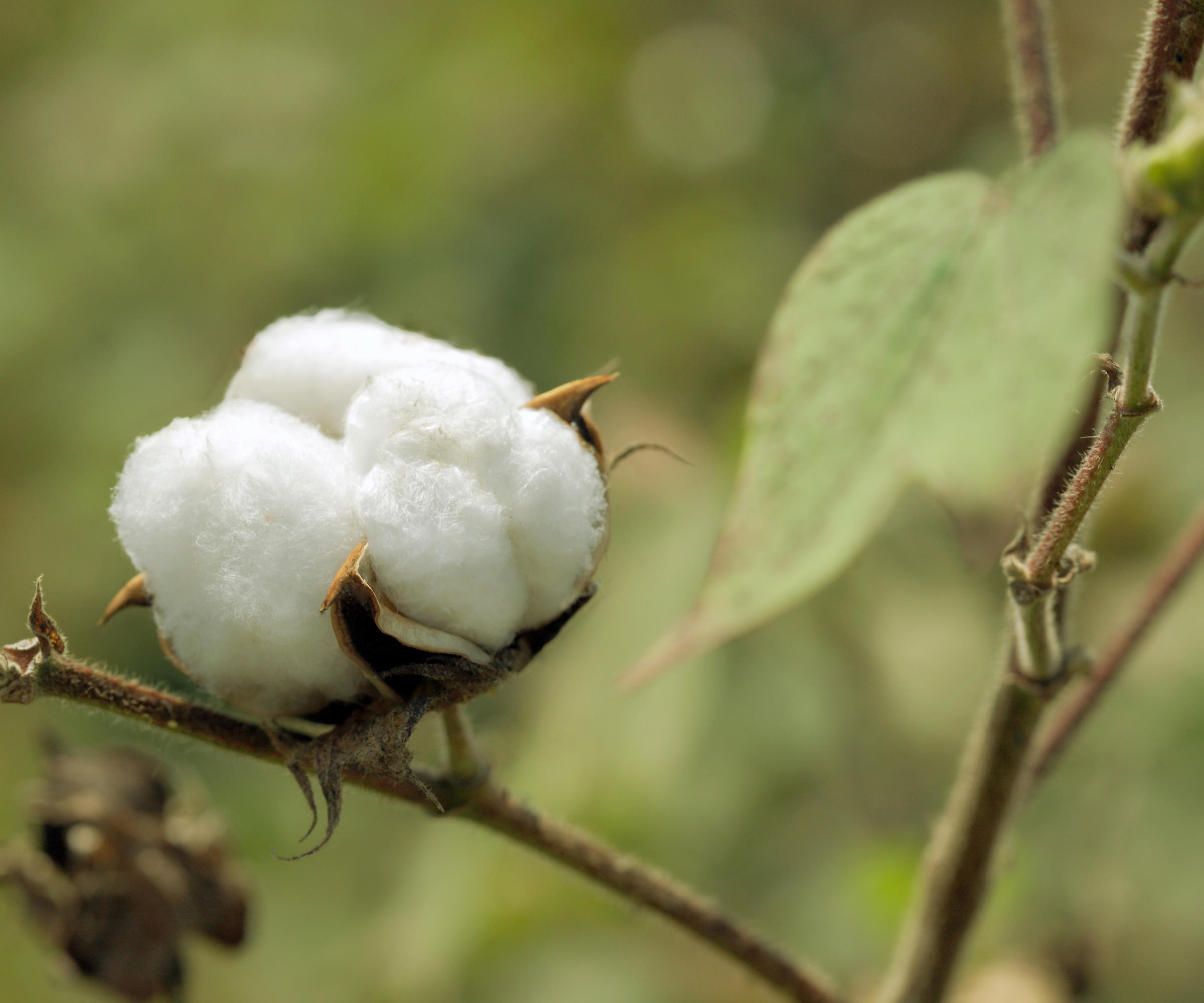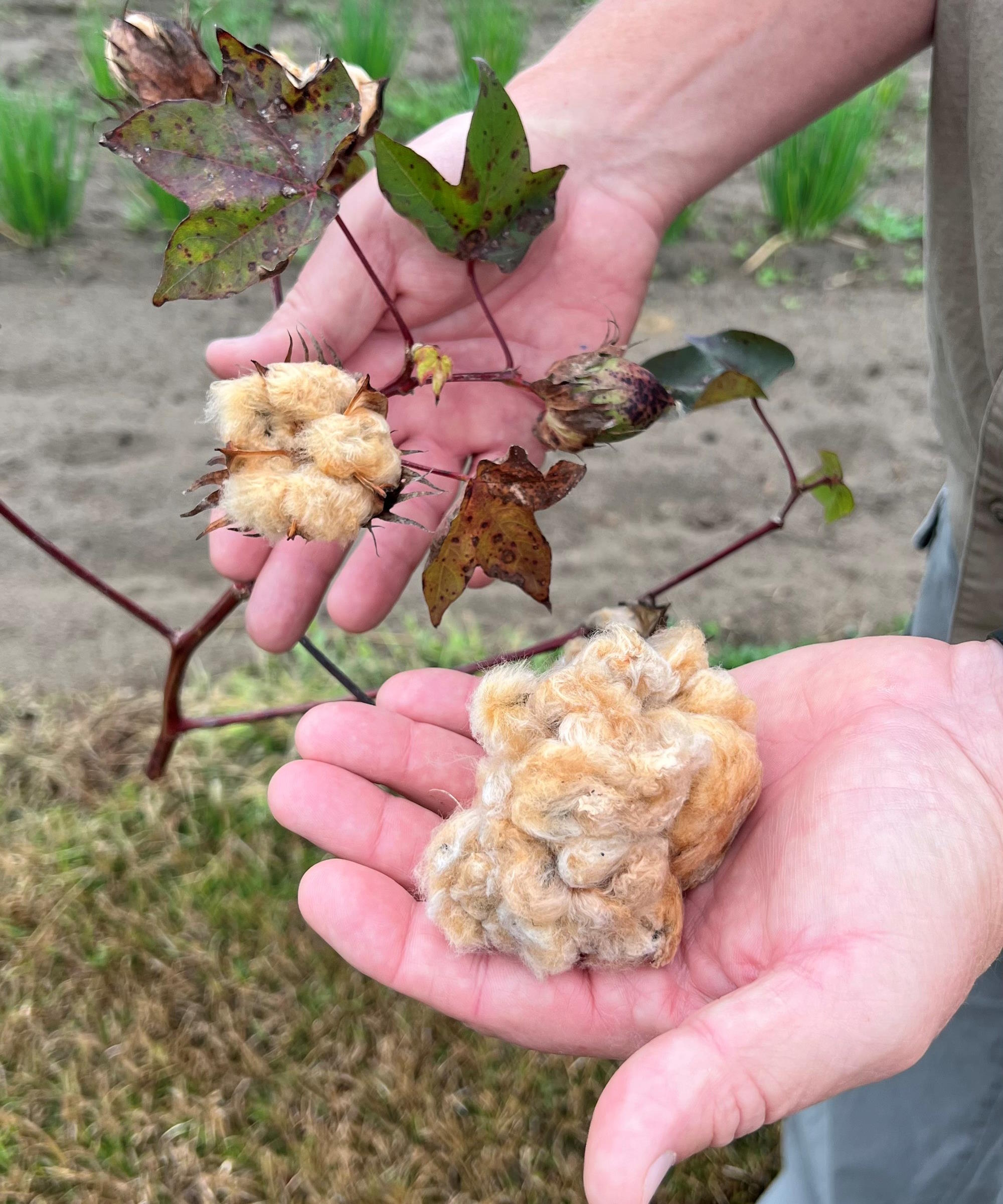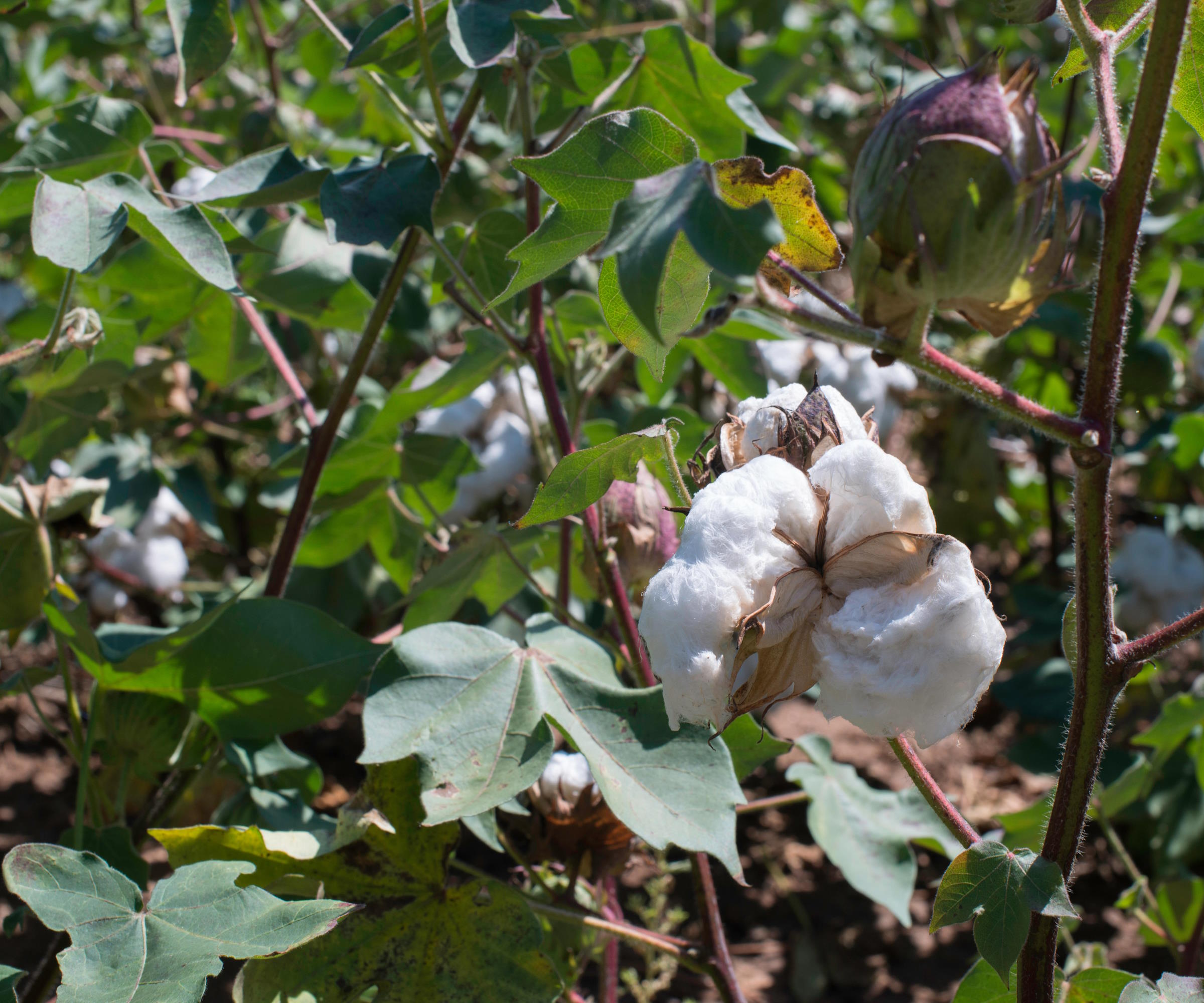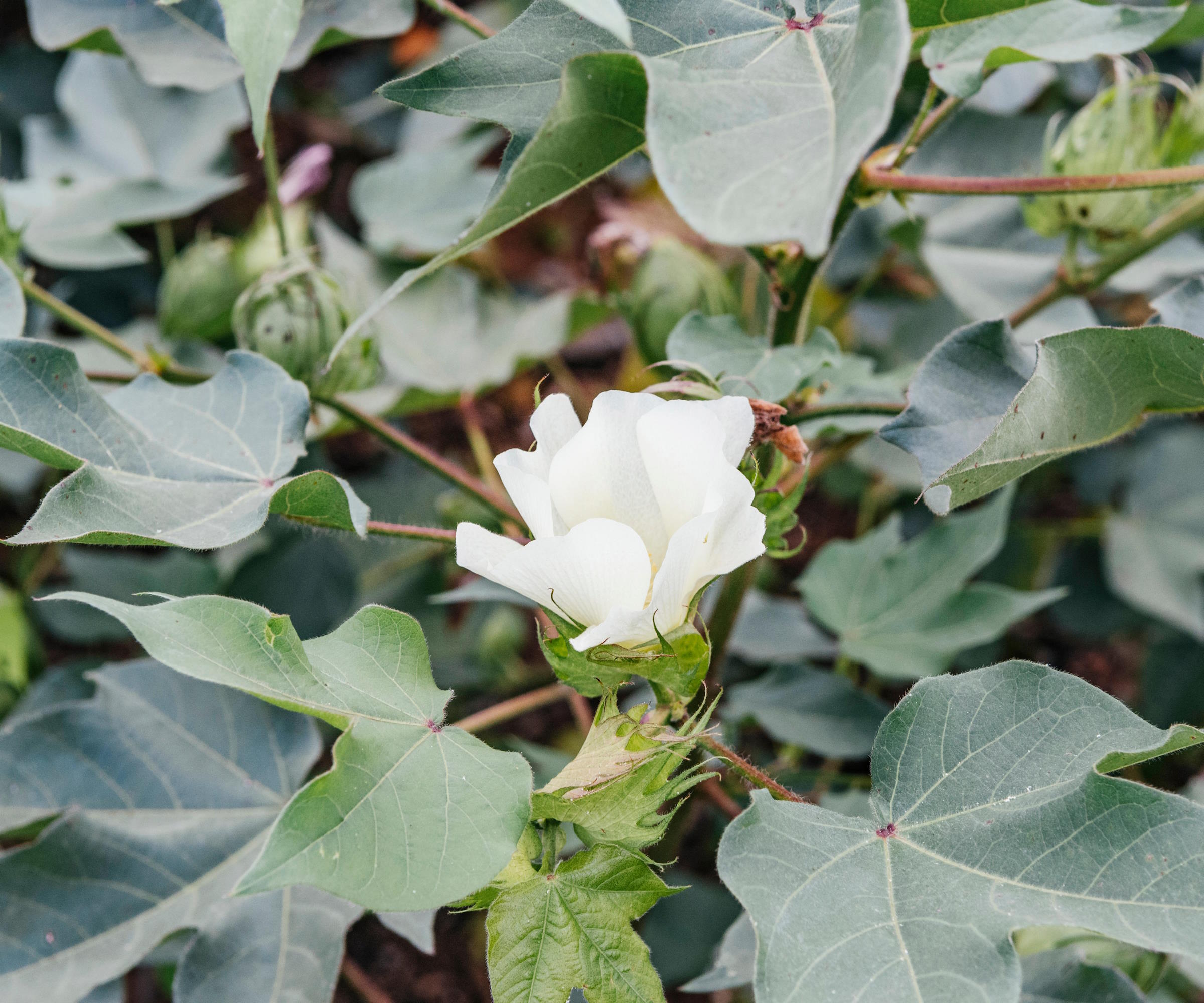
Cotton may not be a traditional crop for many backyards, but this tropical plant can be simple to grow from seed under the correct conditions. It is a sun-loving plant that is actually a perennial, though grown as an annual by many gardeners due to its inability to stand a frost. The plant is part of the mallow family, which also includes hibiscus and okra, and these plants are all known to thrive in heat.
Cotton is grown commercially in the US throughout the area known as the ‘Cotton Belt’ of warm southern states running from North Carolina to California. It is currently illegal to grow cotton in your backyard in US states where it is grown commercially. This is to control boll weevil, and you must check with your local State Plant Board for the regulations in your area.
If you do live in a warm US hardiness zone and are able to try growing cotton as part of your backyard ideas, take a look at our expert steps on how to grow cotton from seed.

How to grow a cotton plant from seed
Cotton seeds can be sourced from garden centers or online. The most commonly cultivated types that you are likely to find as seeds are Gossypium hirsutum and Gossypium barbadense.
A lot of commercial varieties available today are genetically modified (GMO), however there are some heirloom varieties that can be sourced to grow at home. One example of non-GMO cotton seeds is these MRC Cotton Seeds available at Amazon. Commercial varieties of cotton are white in color, while there are also brown types of cotton.

How to germinate cotton seeds
Cotton has a long growing season and needs up to five months of frost-free growing. Therefore, the seeds are sown in spring to allow the plants the longest growing season possible. In warmer climates the seeds can be sown directly into the soil outdoors, though the seeds can also be started indoors earlier. Whether you are planning your greenhouse sowing for spring, or simply have a sunny windowsill to germinate seeds successfully on, starting cotton seeds early indoors means you can extend the growing season.
When it comes to how to plant a cotton seed directly into the soil, the ideal month to do so would be May. Greg Key, a gardener with over 30 years experience and the founder of Hoss Tools, advises that the ideal soil temperature for sowing cotton seeds is when it reaches a minimum of 60F.
He says: ‘Planting in soil cooler than 60 degrees will result in poor germination. Little to no growth will happen below 60 degrees. Cotton is generally planted in 36 inch rows and plant spacing 12-18 inches. The ideal planting depth is 0.5 to 1.5 inches deep.’
Seeds can be sown indoors from mid-March onwards, ready to transplant seedlings out into the garden after the risk of frost has passed in your area. Sow seeds thinly in individual pots or plug trays filled with a good quality seed compost - which is always the best soil to start to start seeds in - and grow them in a sunny location where temperatures are above 60F. An example of a good seed compost is the Espoma Organic Seed Starter, available at Amazon.
Keep the pots well-watered and thin the seedlings after they germinate so you have one strong cotton seedling to grow. There is no need to fertilize the seedlings at this point. Your young cotton plant will require a period of hardening off before ultimately being planted out into the garden.

How to plant cotton grown from seed
The ideal spot to plant cotton is one that gets a lot of sunlight. The ground wants to have a soil pH of around 6.0 and be fertile and well-draining. It is recommended to incorporate organic matter such as compost or well-rotted manure into the soil before planting. This will improve the structure and help to retain moisture, as well as add valuable nutrients as it breaks down. Cotton can grow on any soil type, but the plants will require more fertilizer and organic matter if the soil is poor.
If you are transplanting cotton plants grown indoors, keep an eye on the temperature and wait until the soil temperature hits the 60F mark to ensure the plant grows happily.
As part of any crop rotation, it is best to avoid planting cotton in the same area where okra was planted the previous year. It should also not be planted near okra or hibiscus, as nematodes are a typical pest for plants in the mallow family. Place your plants in rows 2-3 feet apart and with 12-18 inches between each.
Cotton plants grown from seed can be grown as part of container gardening ideas on a deck or patio. Use a large pot of at least 12 inches in diameter and make sure it is a planter with holes in the bottom for drainage. Fill your chosen container with a good quality potting soil - never reuse potting soil or use old garden soil in pots as it holds too much moisture and risks your plants rotting.

How to care for cotton plants
Cotton plants do not like too much water and they can be a drought resistant crop once they are established. The most important timings for water are when they are getting established and then when they are blooming, which is during the middle of their growing season.
Pieter Westerbeek, a veteran gardener and seed expert from Monsanto, advises that cotton plants overall prefer warm soils ‘without excess moisture’ and they are ‘best grown drier than wetter’.
The ideal level of moisture for plants is around one inch of water per week, whether supplied by rainfall or from the gardener watering plants. It is advised to water plants around once a week until the blooming starts, and increase to twice a week once they are fruiting.
Cotton benefits from regular feeding throughout the growing season, to ensure the plants grow healthy and produce a good crop. Greg Key explains how nitrogen is ‘the most important nutrient’ when growing cotton as the plant consumes nitrogen at a much higher rate than phosphorus and potassium.
‘It is recommended to use a balanced fertilizer such as 10-10-10 and alternate with a nitrogen source such as ammonium nitrate (Available at Amazon). A general recommendation is to apply nitrogen a couple of weeks before the first bloom and a couple of weeks after the first bloom,’ says Greg.
‘Cotton also responds well to micronutrients such as sulfur, boron, magnesium and zinc. A couple of applications of a product such as Hoss Microboost, will give the plant all the needed micronutrients for a healthy plant.’
Cotton flowers appear white, usually after around 40-45 days, and turn yellow when they have been pollinated. The blooms are followed by the appearance of a boll - which is the mature fruit of the plant that opens to reveal a cotton ball to harvest. It is time to harvest your cotton when all the bolls on the plant have opened to reveal their inner fluffy balls. At this time the plant itself will start to shed leaves and dry up.
MicroBoost is a garden supplement that provides essential micronutrients to maximize your harvests. It includes essential micronutrients like magnesium, sulfur, boron, rron and several others. The supplement can be used alone or added to balanced fertilizers.
FAQs
How long does it take to grow cotton from seed?
Cotton has a long growing season and it can take between 160 and 180 days to go from sowing the seed for the pod to crack open to provide a crop. The plant needs a long period of warm temperatures to develop and then it can take around 50-60 days from when the flowers start blooming to the time the bolls reveal the fluffy cotton inside.
The exact time it will take to grow cotton from seed will depend on your climate and the growing conditions throughout the season.
Can you grow cotton in a greenhouse?
A greenhouse can provide the heat and light required to grow cotton. If you do want to add growing cotton to your greenhouse ideas, then be aware that it is a plant that needs space, as it can reach up to five feet in height, and it will need more watering than when grown out in the garden.
If you want to look for a cotton alternative, then you could consider growing bamboo. This fast-growing plant is increasingly popular as a textile and very simple to grow.
Just beware of its tendency to spread and consider growing it in a large pot or contained space to stop bamboo spreading.







